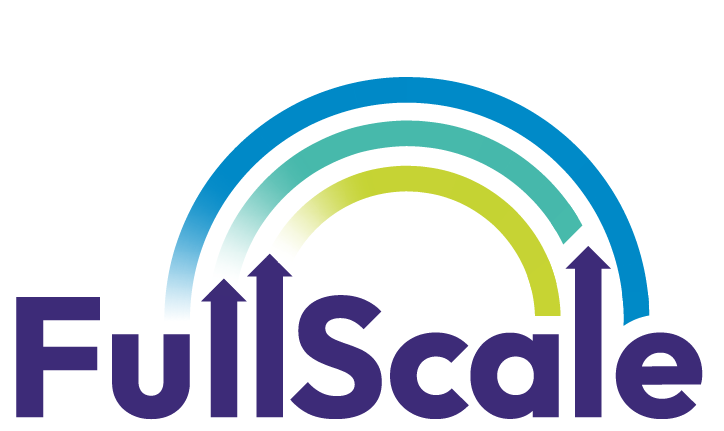Picture this: The leaders of two promising educational innovations were eager to start the new school year as they were scaling their products to new districts. Across both districts, leaders were committed, teachers saw potential, and students were excited. But by winter break, one innovation was being readily adopted, while the other saw a significant decrease in usage, despite both going according to plan.
This tension is central to implementing education innovations at scale: why do some promising programs or tools sustain and evolve while others lose momentum as they expand?
The Accelerating Adoption Network (AAN) was created to help innovators answer precisely these types of questions. As a core component of FullScale’s Exponential Learning Initiative, AAN comprises 10 networks seeking to broaden the adoption of digitally-enabled, evidence-based innovations that accelerate learning within the K-12 instructional core.
Over the past year, we’ve supported these networks in expanding their tools and programs to serve significantly more students. In partnership with Mathematica, we’ve identified critical factors in this area, drawing on lessons from early rollout, building system partnerships, and insights from educators. Key to this work has been reflection, including the networks’ recent summative reflections on their first year. These learnings underscore an important reality: complex challenges, like the one above, are inevitable and ongoing when expanding education innovations. Success doesn’t come from solving these challenges once during pilots; it comes from continuing to diagnose them accurately, addressing them effectively, and applying what you learn to future efforts.
We know most challenges blend elements of both technical problems (clear issues with straightforward solutions, typically resolved by experts within existing structures) and adaptive problems (harder to identify, require shifts in values and behaviors, cannot be solved by authority alone, and demand time and experimentation) (Heifetz et al., 2009). To scale effectively, leaders must navigate both simultaneously, even after the initial growing pains that accompany early stages of an innovation. To illustrate what this looks like in practice, and the complexities involved, we’re sharing real-life AAN scenarios that highlight the leadership required to sustain adoption.
Example 1: Turning Technical Problems into Adaptive Opportunities
One AAN network rolled out a new tool feature in a district known for embracing innovation, assuming teachers would adopt it eagerly despite some anticipated technical glitches. They planned for rapid development cycles to fix these issues, but didn’t anticipate that the glitches would erode trust in the product and expose deeper barriers: innovation fatigue, competing priorities, and a lack of ownership. In response, the team pulled back, strengthened core functionality, and planned a relaunch that combines a reliable product with intentional mindset-shaping for early adopters.
Key Takeaways:
This example shows how even expected technical issues (in this case, technical glitches) can spark adaptive challenges, such as skepticism, fatigue, or disengagement, which require more than updates and bug fixes to solve. Leaders addressed both by taking a step back to stabilize the product (technical) and plan for how to guide teachers to embrace an early-adopter mindset and take ownership (adaptive). This dual-track approach demonstrates that implementing innovations at scale isn’t about fixing systems or shifting mindsets alone—it’s about doing both in tandem, ensuring technical stability while strengthening relational trust so the innovation can take root and grow.
Example 2: Ensuring Technical Challenges Don’t Hide Adaptive Barriers
Another AAN network knew that expanding to larger districts would require more onboarding workshops and planned accordingly. However, they didn’t anticipate the complexity of scheduling across so many individual sites, which led to delays in rollout. The team could have treated this as purely technical, continuing to hunt for times that worked at every school or drawing out the onboarding timeline. Instead, they combined sessions across schools and gave teachers the flexibility to choose times that fit their schedules. This adjustment also met a need for autonomy and collaboration resulting in happier teachers, smoother logistics, and deeper engagement.
Key Takeaways:
This example highlights how technical problems often mask adaptive challenges. At first glance, the barrier appeared logistical, but beneath the scheduling issue lay a deeper obstacle: teachers’ lack of agency and opportunity to collaborate. Rather than settling for a technical fix, leaders created structures that enabled teacher choice and fostered cross-school collaboration. By creating structures for teacher choice and cross-school collaboration, leaders addressed both dimensions of the challenge and came away with a much stronger and more sustainable solution. This illustrates that implementing innovations at scale requires intentional, nuanced diagnoses of challenges, even when they appear technical on the surface, to ensure solutions account for both technical and adaptive aspects.
What These Stories Have in Common
In both cases, the turning point came when leaders paused to understand challenges that seemed straightforward but went much deeper. By diagnosing the problem correctly (see Figure 1), they could pair technical fixes with adaptive guidance, sustaining momentum and expanding adoption.
As Heifetz et al. (2009) note, technical challenges live in systems, while adaptive challenges live in people. Moving from pilot to full adoption isn’t about solving one terrain first or assuming problems fixed in pilots won’t resurface in more complex ways as adoption expands. It requires navigating both simultaneously—diagnosing problems accurately, addressing technical hurdles, and shaping adaptive shifts in mindsets, roles, and behaviors. For many AAN networks, success emerged when leaders treated these challenges as two sides of the same coin, intentionally managing both to sustain and accelerate adoption.
Figure 1
| Kind of challenge | Problem definition | Solution | Locus of work |
| Technical | Clear | Clear | Authority |
| Technical and adaptive | Clear | Requires learning | Authority and stakeholders |
| Adaptive | Requires learning | Requires learning | Stakeholders |
Adapted from The Practice of Adaptive Leadership (p. 20), by R. Heifetz, A. Granshow & M. Linksy, 2009, Cambridge leadership Associates.
Conclusion
As one AAN grantee reflected, “This first phase affirmed that innovation in education is both technical and relational.” Reflections from AAN networks reinforce that innovating at scale isn’t about fixing Wi-Fi before addressing culture or securing buy-in before solving login issues. Lasting success comes from accurately diagnosing the challenge and matching your leadership approach accordingly. Leaders who move across both domains, addressing systems and people in tandem, are the ones who turn hurdles into sustained momentum and meaningful impact.
Curious about the AAN and our Exponential Learning Initiative? Check out our latest releases here, and sign up for our newsletter so you won’t miss what’s coming next.
Heifetz, R., Grashow, Al., & Linsky, M. (2009). The practice of adaptive leadership: Tools and tactics for changing your organization and the world. Cambridge Leadership Associates.
For more, see:
- Meet TLA’s Accelerating Adoption Network Cohort
- Scaling Smart: Diversifying Funding and Partnership Strategies During Uncertain Times
- Brief: Innovative Approaches to Learning Acceleration Within the Core of K-12 Instruction: Initial Observations About Scaling and Implementation
- Brief: Innovative Approaches to Learning Acceleration Within the Core of K-12 Instruction: Educator Insights into Scaling and Implementation





